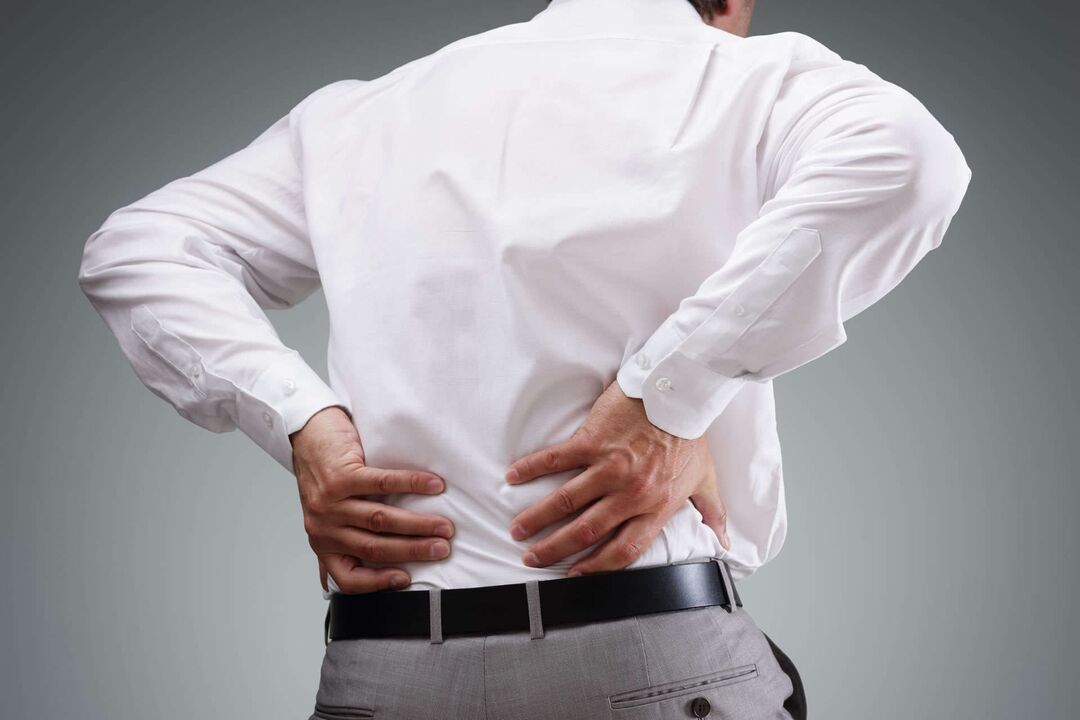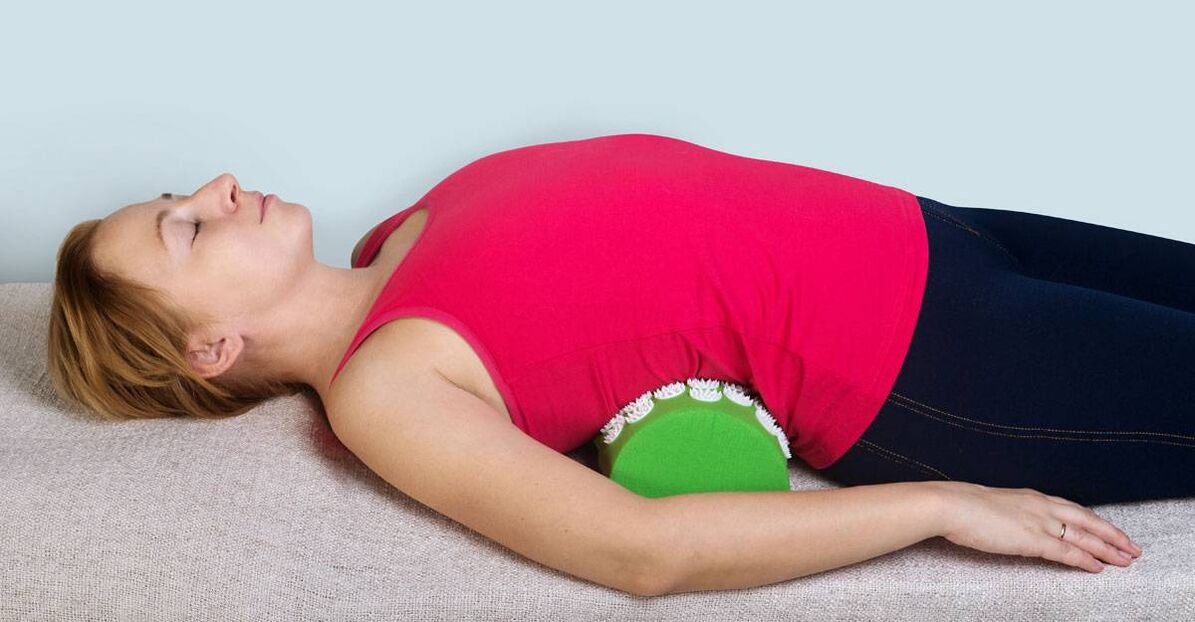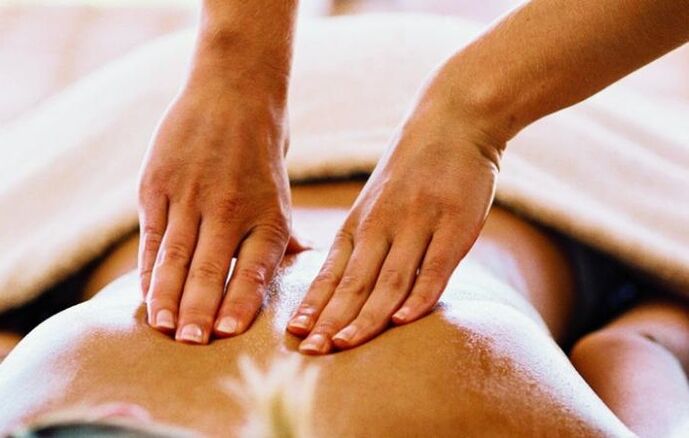With spinal osteochondrosis, destruction of the bone and cartilage tissue of one or more parts of the spine occurs. The disease is chronic and develops in almost all the elderly. This is due to the normal aging of the body.

The intervertebral disc undergoes atrophic changes, and at what age this occurs depends on many factors:
- trauma;
- disease and spinal burden.
Spinal loads include:
- walking with a bent back;
- improper sitting;
- structural features of the spine;
- inadequate nutrition of spinal tissue due to hereditary anomalies.
With osteochondrosis, the nucleus located between the vertebral discs loses some of its water. Due to this, metabolic disorders occur in the nucleus and access to various minerals and vitamins is blocked.
After a while, cracks appear in the disc, it becomes flat. Next, nearby joints and ligaments begin to be affected, forming tissue inflammation. Due to inflammation, adjacent vertebrae are displaced. This is dangerous with the appearance of radicular symptoms: pain along the affected nerve.
It may also be the appearance of an intervertebral hernia, and he, in turn, can trigger spinal cord compression. Osteochondrosis is characterized by the appearance of osteophytes - bone growths on the vertebral body. These growths can compress the spinal cord and cause radicular syndrome.
Often, the cervical and lumbar areas are prone to osteochondrosis.
Cervical osteochondrosis
Cause:
- sports activities (weightlifting);
- overweight;
- metabolic diseases;
- sedentary work (programmers, accountants, drivers, etc. );
- Flat feet;
- spinal cord injuries;
- hypothermia.
symptoms
The main symptom of osteochondrosis of the cervical spine is pain in the head and neck. Someone worries about severe headaches, pain in the neck, radiating to the arms, pain in the sternum. Patients may complain of lumbago - the appearance of sharp pain in the neck, muscle spasms and restriction of movement.
Also, one can hear a buzzing sound when turning the neck. Due to pinched nerves and blood vessels, a person may experience numbness on the tongue and fingertips. Patients will complain of decreased hearing and vision, high blood pressure and weakness in the muscles of the arms and legs.
Osteochondrosis of the chest
This type of osteochondrosis is relatively rare. This is due to the anatomical structure of the thoracic spine. It consists of 12 vertebrae, which are connected to the ribs through joints. In the front, the ribs are connected to each other by the sternum. Thus, an excellent framework is created from the spine, sternum and ribs, which protect the internal organs from various injuries.
The vertebrae of the thoracic region are low in height and have a long spinous process, located one on top of the other, like shingles. Because of this structure, this part of the spine has low mobility. The intervertebral disc of the thoracic region is rarely injured.
Causes of the formation of this type of osteochondrosis:
- irrational load distribution;
- delays in intervertebral disc nutrition;
- sedentary work;
- the presence of scoliosis.
symptoms
Like other types, pain is the main symptom of thoracic osteochondrosis.
But with chest osteochondrosis, the pain can be different. Dorsalgia - long -term discomfort and mild pain along the thoracic vertebrae. Pain can affect the cervical and lumbar areas.
Dorsago is one of the signs of thoracic osteochondrosis, in which pain occurs in the form of attacks. By its nature, it is intense, acute, leads to difficulty breathing, and leads to restriction of muscle movement. In addition to pain, patients may experience numbness in the chest, impaired sexual function, pain in the heart, kidneys and abdomen.
What are the dangers of affecting the thoracic region?
The spinal column is designed so that it narrows in the thoracic area, so a hernia arising from osteochondrosis will quickly lead to spinal cord compression. This can easily lead to problems with the heart, pancreas, liver and kidneys, as the thoracic area is connected to all these organs by nerve fibers. That is why it is very important to see a doctor on time. He or she will help to find out where the symptoms of osteochondrosis that are bothering you are coming from and will carry out efficient treatment of the disease.
Lumbar osteochondrosis
Osteochondrosis of the lumbar spine occurs due to weight lifting. Typically, in the center of the intervertebral disc there is a nucleus that contains a large amount of water. Due to the liquid, the core becomes slightly compressed, and for its rupture, a compression of 500 kg is required.
However, the disc affected by osteochondrosis becomes weaker, and only 200 kg is needed to break it. If a person weighing 70 kg lifts 15 kg of load in a bent position, and for this spine is a load of 200 kg, the intervertebral disc may rupture. That is why the first symptoms of spinal osteochondrosis appear when lifting weights.
symptoms
- pain in the lumbar region;
- inability to move in the lower back;
- sleep disorders;
- irritable;
- fatigue;
- the inability to meet household needs;
- decreased sexual function in men;
- menstrual cycle violations;
- cold foot syndrome.
With the transition of osteochondrosis to the sacral region, the patient experiences pain in the renal area and urinary incontinence.
Diagnostics
Osteochondrosis is treated by a neurologist. For a start, he examined the spinal column, drawing attention to the presence of scoliosis. After feeling, the doctor will be able to understand how the spine, tendons and nerves effect.
After the neurologist suspects spinal osteochondrosis, he or she will refer the patient for additional examination. These include X-ray examination routes, magnetic resonance imaging. If there is a suspicion of intervertebral disc destruction, discography is performed. It is also prescribed to determine the degree of damage to nerve pathways.
In general, it is very difficult to diagnose spinal osteochondrosis. After all, a person can complain of pain in the heart, liver, kidneys, pancreas, or sexual dysfunction. But still, with a thorough examination, an experienced doctor will be able to suspect the disease and prescribe the right treatment.
Treatment
Osteochondrosis therapy is a very long and difficult process. In the acute period, the patient needs another affected part. If the cervical spine is affected, then the patient should wear a Shants fixation collar. If the lumbar spine is sore, the patient needs a nap break. It is better to put the patient in the hospital. Only there will he be able to fully comply with the established regime. The bed of such a patient should be hard. For this, a wooden board is placed under the mattress.
Drug treatment
As mentioned above, the main symptom of this disease is pain. Therefore, patients are prescribed analgesics, non-steroidal anti-inflammatory drugs to relieve pain and other symptoms of osteochondrosis.
Unfortunately, long-term use of these drugs causes damage to the mucous membranes of the gastrointestinal tract and patients experience the following symptoms:
- nausea;
- vomiting;
- stomachache;
- heaviness in the abdomen.
Stomach ulcers may also worsen or stomach bleeding may appear. Therefore, before using this drug, you should consult your doctor. If the pain caused by osteochondrosis lasts for 3 months, antidepressants are prescribed along with these medications. It has been found that, in addition to their sedative effects, they can reduce pain.
All drugs can be classified as symptomatic therapy. They will help relieve pain, but they will not rid a person of the disease itself.
Chondroprotectors are prescribed to restore the intervertebral disc and cartilage. These drugs increase the metabolism of connective tissue and help restore cartilage. Medications are taken for a long time, on average - 4 - 6 months.
In addition to restoring tissues and increasing metabolism in them, these drugs also have analgesic effects. Another group of drugs needed for spinal osteochondrosis are drugs that improve blood circulation, their use helps expand blood vessels, and if thioctic acid is taken in combination with it, then nerve cell metabolism in a person will improve.
As with any disease, patients need calcium supplements. It will restore the activity of bone tissue, increase the strength of ligaments and tendons, and even prevent osteoporosis - a disease that accompanies osteochondrosis.
Physiotherapy

The dose load on the spine will improve the patient’s condition. But you have to do the exercises carefully. In the acute period, physical education is contraindicated. Only when the pain subsides can you start practicing a little.
Exercise will improve blood circulation in the spine and strengthen muscles. Due to blood flow, metabolism will improve and recovery of the damaged intervertebral disc will begin. But you must also remember that classes must be conducted regularly, otherwise there will be no results.
Exercise for cervical spine lesions
- Lie on your back and straighten your body. Place one hand on your stomach and the other on your chest and inhale, hold your breath for 10 minutes, then exhale and relax. Training duration is 3 - 5 minutes. You need to do it 3-5 times a day.
- Lie on your stomach and straighten your legs. Leaning on your stomach and legs, you need to raise your upper head and chest. Do the exercise for 3 - 5 minutes with an interval of 30 seconds.
- Lie on your back and bend your knees. In this position, turn right and left. Do the exercise for 3 - 5 minutes with an interval of 30 seconds.
Exercises for lesions of the thoracic region
- Lie on your stomach. Place your hands on the floor and bend backwards. Hold this position for 5-10 seconds. Do the exercise for 3 - 5 minutes with an interval of 20 seconds.
- Lie on your back. Lift your head and legs ("boat"). Hold for 10-20 seconds. Do the exercise for 3 - 5 minutes with an interval of 20 seconds.
Exercise for lumbar spine lesions
- Lie on your back, bend your knees and bring it to your chest. Shake back and forth and roll from back to sacrum and back. Swing for up to 2 minutes. Then you need to lie down calmly and relax.
- You need to crawl and bend as far as possible. Do the exercise for 3 - 5 minutes with an interval of 20 seconds.
- While standing, imagine turning the loop for 2 to 3 minutes. Exercise 10 times a day.
Surgery
If there is no effect from conservative treatment and the appearance of complications of osteochondrosis, surgical treatment is prescribed. During spinal stabilization, pressure on the spinal cord and roots is eliminated. If a person has an intervertebral hernia, it is removed. Since this operation can damage the spinal cord and nerves, it is performed only for important reasons.
Physiotherapy treatment
The appointment of physiotherapy procedures has a positive effect on the course of the disease and accelerates the recovery process. With osteochondrosis, it is allowed:

- visit a sauna or bath;
- swimming in the pool;
- massage;
- paraffin therapy;
- manual therapy;
- laser therapy;
- various baths;
- mud therapy;
- electrophoresis with anti-inflammatory drugs or muscle relaxants;
- magnetotherapy;
- darsonval.
All of these procedures improve blood circulation in the diseased area, allowing the muscles to relax and unwind throughout the body. Physiotherapy procedures are prescribed during the recovery period, when the patient is not bothered by severe pain.
Prophylaxis
No one is immune from osteochondrosis. After all, we are all getting older, and our whole bodies are also getting older with us. In order for the disease not to ruin your plans, you need to exercise from a young age. Moderate physical activity improves blood circulation, normal metabolism. In addition, it trains the muscles that protect the spinal space. To prevent osteochondrosis, everyone should:
- eat right - vitamins and minerals needed for the body;
- to reject bad habits;
- engaging in physical education;
- do not bend;
- protect your back from hypothermia;
- do not lift objects too heavy;
- contrast baths and patience;
- avoid stress.
It is very important for people suffering from this disease to follow all recommendations, as their failure will lead to severity. If you are experiencing back pain that has not gone away for a long time, you need to seek help from a specialist. Only a doctor can make a correct diagnosis and prescribe treatment.
Do not delay visiting the clinic, as it is better to treat the disease at an early stage. Also, don’t self -medicate - any medication has its own contraindications, which you may not know. Follow all the recommendations of the doctor strictly and then the disease will immediately subside!












































